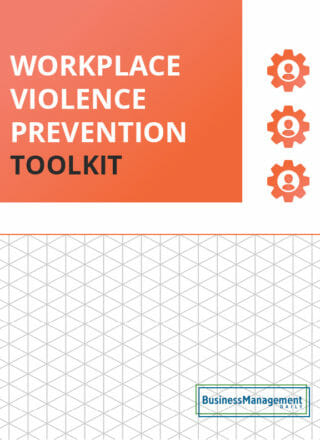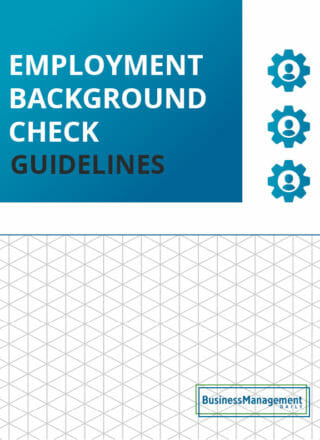Is autism protected by the ADA? A guide for employers
Contrary to popular belief, The Americans with Disabilities Act (ADA) does not contain a list of ‘protected disabilities.’
Instead, it provides an intentionally vague definition of a disability to cover as many debilitating conditions as possible and to keep up with changing circumstances.
A perfect example is the increased prevalence of autism spectrum disorder (ASD).
ASD prevalence in the United States has increased by 312% since the year 2000, and it now affects 1 in 36 children.
According to the Centers for Disease Control and Prevention (CDC), over 5.4 million adults (roughly 2% of the US population) in the US have ASD, so it’s become increasingly common in the workplace, too.
Does the ADA cover autism as a protected disability?
We will answer this million-dollar question today, as many nuances are involved.
For the most part, ASD is a protected disability under the ADA because of how the condition hinders significant life activities like social interactions.
However, as with any other disability, the Equal Employment Opportunity Commission (EEOC) decides on a case-by-case basis whether an employee is protected by the ADA.
If it’s determined that one of your employees (or job candidates) is protected under the ADA, you may have to provide reasonable accommodations for them.
These are slight adjustments to an employee’s work environment that offset their impairments so that they can perform better at their jobs.
There’s a lot to learn about managing employees with ASD, so read on to learn everything employers need to know.
Understanding autism spectrum disorder
Autism spectrum disorder is a developmental disability that impacts how an individual learns, communicates with others, and behaves.
In particular, ASD causes challenges with social interaction (most notably difficulty developing social skills), restricted or specific interests, sensory overload, and repetitive behavior.
ASD is a form of neurodivergence that causes an individual’s brain to develop or work differently than the majority.
In 1998, Australian sociologist Judy Singer coined the non-medical term ‘neurodiversity,’ which refers to how everyone’s brain develops uniquely. There are, for the most part, two camps: neurotypical and neurodivergent.
Other mental health conditions, such as attention deficit hyperactivity disorder (ADHD), also qualify as neurodivergent – although one can be considered neurodivergent without having any known medical conditions.
As the name implies, ASD has varying degrees of severity, symptoms, and individual conditions, like Asperger syndrome, that occur along a spectrum.
There are three levels of severity for ASD that require varying levels of support, which are:
- ASD Level 1. Individuals with level 1 ASD require a basic level of support. They may have difficulty understanding or following social rules and exhibit stubborn behavior. Change in their lives (such as starting a new job) may be a slight source of stress. Autistic people with level 1 ASD typically benefit from some therapy or life-skills coaching.
- ASD Level 2. Someone with ASD level 2 requires a substantial amount of support due to their lack of communication skills. They tend to exhibit abnormal social behavior, such as wandering off during an active conversation. ASD level 2 individuals are often deeply interested (and knowledgeable) about particular topics. Life changes or transitions are often significant sources of stress. These individuals benefit from social-skills support, job coaching, and reading help.
- ASD Level 3. The most severe level of ASD causes individuals to have extreme communication deficits, with some not speaking at all. They also exhibit repetitive behaviors like rocking, spinning, or pacing. Change causes so much stress that individuals with level 3 ASD will often come under extreme distress when asked to switch tasks. They usually benefit from augmentative and alternative communication (AAC), such as special telecommunications technology. Community living is also a common choice for individuals with severe ASD.
Most people receive a diagnosis of autism spectrum disorder by the age of 2, which reflects on its developmental nature.
Telltale signs of ASD in infants include:
- Lack of eye contact
- Not responding to their name
- Trouble expressing emotions
- Language delays and trouble communicating
- Repetitive behavior and repeating the same phrases
Difficulties in the workspace caused by ASD
Since ASD causes so much difficulty communicating and interacting with others, autistic people often struggle to find work.
Studies have shown that only around half of individuals with ASD are gainfully employed. Of those polled who were employed, most were working part-time jobs (or jobs they were clearly overqualified for).
Many autistic individuals do volunteer work to interact with the community without dealing with stressful responsibilities (or tasks they don’t like).
Common difficulties experienced by individuals with ASD in traditional work environments include:
- Sensory issues such as experiencing sensory overload due to excessive noise or light
- Trouble managing time
- Atypical communication styles
- Anxiety from social interactions
- Difficulty controlling one’s emotions
- Not being able to follow conversations
In recent years, there’s been an uptick in advocacy toward hiring autistic individuals, especially instead of the condition’s prominence.
Despite setbacks in communication, there are advantages to hiring workers with ASD, including:
- The ability to focus on individual tasks for extended periods
- Creative, outside-the-box thinking and decision-making
- incredible attention to detail
It’s most helpful whenever an autistic individual’s interests align with the daily tasks at your organization.
Does the ADA provide disability rights to individuals with ASD?
Now, let’s take a look at what the ADA has to say about autism.
Two primary federal nondiscrimination statutes address disabled employees: Title I of the ADA and Section 503 of the Rehabilitation Act of 1973.
While most people think of physical disabilities whenever someone brings up the ADA, the civil rights law also protects ‘invisible disabilities’ such as ADHD and severe anxiety.
It should come as no surprise, then, that ASD is also a protected ‘invisible’ disability under the ADA in most cases.
As stated before, Congress intentionally included a vague definition of disability to ensure it covered as many qualifying conditions as possible.
Here’s their basis of disability:
- An individual with a disability is someone who has a physical or mental impairment that limits one or more major life activities, has a record of such impairments, or is known by others to have such an impairment.
In the case of ASD, the condition impairs their ability to interact with others, which now counts as a major life activity, although it wasn’t always that way.
Prior to 2008, when Congress added amendments to the ADA, ASD was often not considered a disability under the ADA.
This was because the courts rejected ‘interacting with others’ as being a major life activity, barring ASD from civil rights protections.
That all changed in 2008, as Congress added ‘interacting with others’ as a major life activity.
This means that, in most cases, ASD qualifies as a protected disability under the ADA.
As such, all the protections the civil rights law provides apply to employees with ASD.
Hiring qualified employees with ASD
The ADA clearly states that it’s illegal to discriminate against potential candidates based on their disabilities.
This means that you cannot refuse to hire a candidate because of their autism spectrum disorder. Instead, you can only refuse employment if they aren’t qualified to perform the job’s essential functions (and these qualifying factors must be independent of their disability).
It’s also illegal to fire an employee due to having ASD. If you’re going to let an employee with ASD go, you must be able to prove that it’s for a reason unrelated to their disability.
The obligation to provide reasonable accommodations
The ADA also states that employers must provide reasonable accommodations that enable disabled employees to perform their duties efficiently as non-disabled employees.
A reasonable accommodation is any change to your work environment that helps a disabled employee perform better on the job.
If an employee with ASD requests accommodations, you must accommodate them unless doing so would place undue hardship on your business.
What’s undue hardship, and how can you prove it?
The ADA defines undue hardship as any ‘action that requires significant difficulty or expense.’
So, if an accommodation request by an autistic employee costs your company a great deal of money (more than you can justify for their position), then you won’t have to provide it. However, you will have to give a written statement explaining why you weren’t able to provide the accommodation to prove the undue hardship case.
How to accommodate employees with autism spectrum disorder
Since ASD is so prevalent, the chances are high that you’ll work with an autistic individual at some point during your career.
That’s why it’s valuable to know how to properly (and affordably) accommodate autistic employees to ensure peak levels of productivity, engagement, and well-being.
As stated before, hiring individuals with ASD can have some real advantages, so it’s worth the time and effort to prepare them for success.
Here’s a look at the most common types of accommodations for autistic employees.
Accommodations to improve communication
There are a wide variety of ways you can accommodate autistic employees to improve their communication skills, including:
- Using written notes and visual aids to help them better retain important information and task deadlines.
- Designate an official job coach/mentor for the employee with ASD. This person will help the employee stay on top of time-sensitive tasks, communicate better with others, and boost their morale.
- Communicate with them using clear, simple language.
- Engage in one-on-one meetings with them to ensure they comprehend everything said. Autistic employees may find large meetings stressful or distracting, so one-on-ones are typically the way to go.
- Provide options for hybrid and remote work. Some autistic employees may prefer to avoid social interactions by working from home full-time (or at least some of the time). Noise-canceling headphones are also great for tuning out distractions and getting more work done.
Accommodations to help with sensitivity
Some autistic individuals are highly sensitive to things like noise and harsh fluorescent lighting.
Here are some accommodations to help ease sensory overload:
- Provide alternative lighting (avoid fluorescents and bright LEDs) to avoid hypersensitivity.
- Modify break schedules to provide extra breaks during the day
- Use stimulating stress lamps
- Provide soothing background noise
- Install blue light filters
Accommodations for stress management
Employees with ASD may have difficulty controlling their emotions or managing stress.
Here’s how you can help them keep their stress under control:
- Providing room dividers and partitions
- Private office spaces
- Stress management devices (like stress balls)
- Keeping offices away from noisy machinery
- Encouraging mindfulness and meditation (you can even provide meditation breaks)
These are all great ways to keep employees with ASD relaxed so they can do their best work.
Final thoughts: Autism and the ADA
Ever since Congress amended the ADA in 2008, autism has been a protected disability in a vast majority of cases.
Autism spectrum disorder is an increasingly common disability that varies in severity, and it’s important for managers to know how to accommodate it.
Properly accommodating your autistic employees effectively provides them with an even playing field, which is why it’s worth it.
More Resources:
FMLA and mental health — what you need to know as an employer
ADA Accommodations for ADHD: Reasonable accommodations & legal protections
ADA can require reasonable accommodations for anxiety, in some cases





